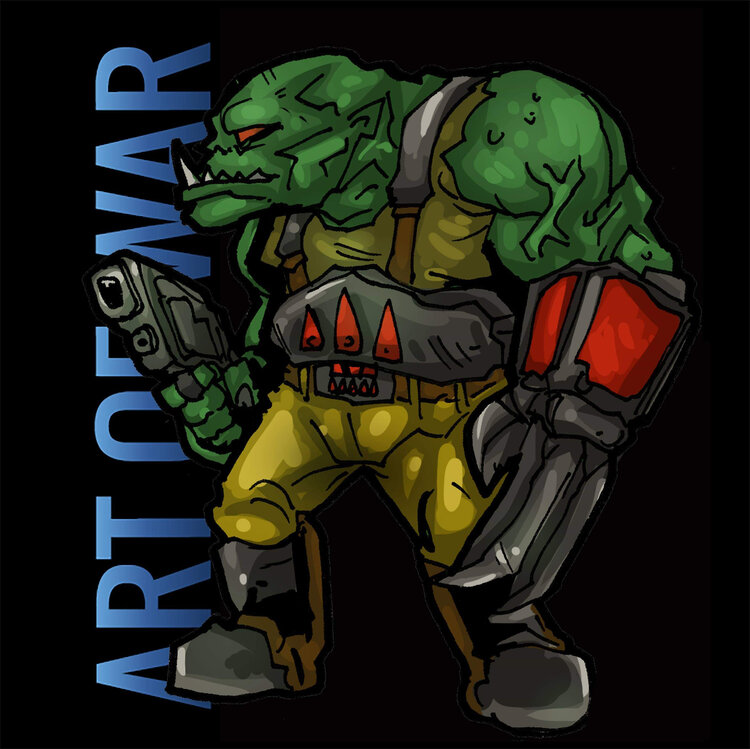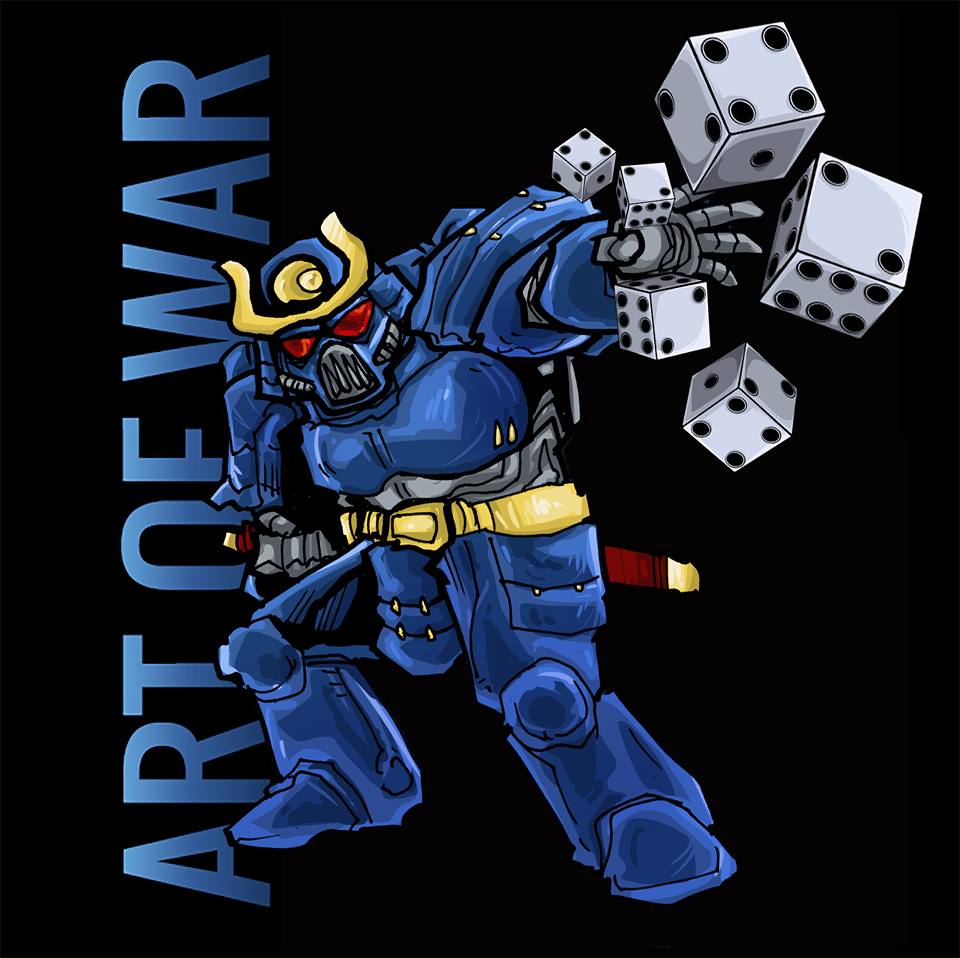Hey, guys! Erik here with all you need to know about how horde armies operate and what goes into playing a horde at the top level in an anti-horde environment!
Where Does the Strength of the Horde Lie?
Although the obvious answer is the model count that comes with being labeled a “horde” army, this masks what its real strength: board control.
All competitive horde lists are built around the idea of having semi-resilient models taken in large numbers that become incredibly hard to shift when they hit a critical mass. This strategy works because we play a game with a limited number of turns. However, in the current state of the game where everything has access to a mass volume of shots, the horde army is forced to adapt to the situation in the form of damage mitigation.
But How Does the Horde Army Project Board Control?
Board control is best done in the form of “tendrils.” Despite what most people may believe about horde armies and how they operate, the worst way to run them is in a large grouping of models and just charging forward at the enemy. This is because it makes it impossible to limit how many units/models are able to shoot at each unit. Instead, by moving in tendrils, you dictate what enemy units can shoot at by removing specific models they are drawing line of sight or range. One of the more niche and exciting things you can do with units moving in tendrils is when it comes time to start declaring charges and pinning units. Often, the back end of the tendril is closer to different enemy models than the front end you are using to tag and wrap them. This means you can dictate what direction the bulk of the unit moves in when piling in and consolidating. Sometimes this allows you to tag even more units or grab objectives you could not quite reach during the movement phase.

Just how does it achieve that? Board Control.
This example is quite specific to when a horde army is paired against a “shooty” list. Its greatest strength in that game is going to be its ability to project board control through the persistent pressure and advance with a tide of models that keeps the enemy in an unfavorable position. This makes it near impossible for the shooting list to set itself up in a position to target key units or sometimes just flat out denies their ability to finish units off. Now, that may seem easy to prevent at times, but the horde army isn’t just going to sit in front of you and get shot all game. It is going to have the ability to remove some of your threats through shooting, spells, and/or pinning units in assault. In the early stages of the game (likely during deployment), the horde player will identify what his/her win condition will be, and that is done usually by limiting the number of turns the opponent can spend rolling buckets of dice at your units.
The way that is done is generally by deploying quite defensively. That may seem odd, but if you put yourself in your opponent’s shoes, they want to stay away from combat with you at all costs. Because of this, it is likely they deploy quite defensively, which is exactly what you want them to do. It enables you to deploy deep, especially in deployments like Vanguard and Hammer and Anvil, and just like that, you have already stripped them of one turn of severe damage. If you’re able to do this again through pinning units in combat, you’re well on your way to locking the game up regardless of how much they kill. They simply do not have the turns to shift you and deal with the number of little characters you may have sitting on objectives. Unless they identify this horrible situation incredibly early, they are playing into a losing game without even realizing it.
When Does the Going Get Tough?
A horde army’s most difficult matchup is assault pressure that outweighs its own. Units that do this are Grotesques, Deathcompany, Ork Boys, Tzangors, Flayed Ones, Bulgryn, and Dragoons. There are a few more, but you get the idea. It’s any unit that can produce a large volume of attacks. The reason why this is much harder to handle compared to a unit with a lot of shots is you are unable to mitigate any of this damage. Against shooting units, you can remove certain models to pull yourself out of range from others, hide out of line of sight, improve their save with cover, or, a big one for Tyranids, access a -1 to hit buff. This means the unit you are fighting is operating at full effect, and the units you are running have lost value because they are there to project board control and keep hard-hitting characters out of harm’s way. When fighting an aggressive combat list, the approach you take to the game is drastically different.
So, how do you handle it? Unlike the majority of your other games where you will use the “tendrils” as described earlier, you will take a more defensive and attrition based approach. With the correct methods of screening and propelling damage at the right times, it is incredibly difficult for these high-burst combat lists to outlast you because they are set up to wrap and pin targets in other peoples shooting armies or obliterate high-value targets. When playing a horde, your army consists of cheap “chaff” units run en masse, so there is no dependence on a single unit. See the picture below on how the deployment and structure of the army look very different from the ones set earlier in this article.
As you can see this looks to be a very different type of game. Something incredibly important to know when you find yourself in these situations is that in the early stages of the game it will feel like it is going quite badly, but if you know that what you are doing is built around giving yourself the ability to take a beating you will out last your opponent, and if they are unaware you’ve prepared for this style of game, they won’t be thinking to do everything in their power to keep you locked up in your deployment zone. They will almost always do what their list is designed to do: obliterate units in close combat.
Last but Not Least
A lot of people have asked me: “how do you manage the length of my turns playing so many models?” Mostly it all comes down to experience, knowing the absolute extent of damage your army can take to the face, and knowing exactly what you have to do in every match up. These drastically speed up your thinking time and become muscle memory. Outside of that, if you are someone having a tough time playing a horde, a lot of it probably boils down to not utilizing tendrils. Not only is it the most effective way to play a horde, but it also cuts down a lot of the time rolling dice when your models are interacting with theirs, e.g. minimum amount of attacks and movement.
To sum it all up, playing a horde is one of, if not the most reliable way to play 40k. No matter the matchup, you have a way to play and stand a chance by leaning on the backbone of your model count and sticking to the tactic of minimizing the number of turns you take damage. Regardless of the state of the game, when the game length is restricted, a large mass of models will always be challenging to handle.
I hope this article on hordes was insightful. You can check out more articles like this at The Art of War.
And remember, Frontline Gaming sells gaming products at a discount, every day in their webcart!

